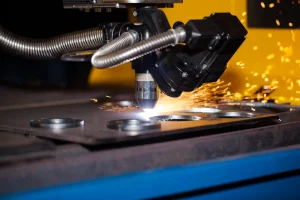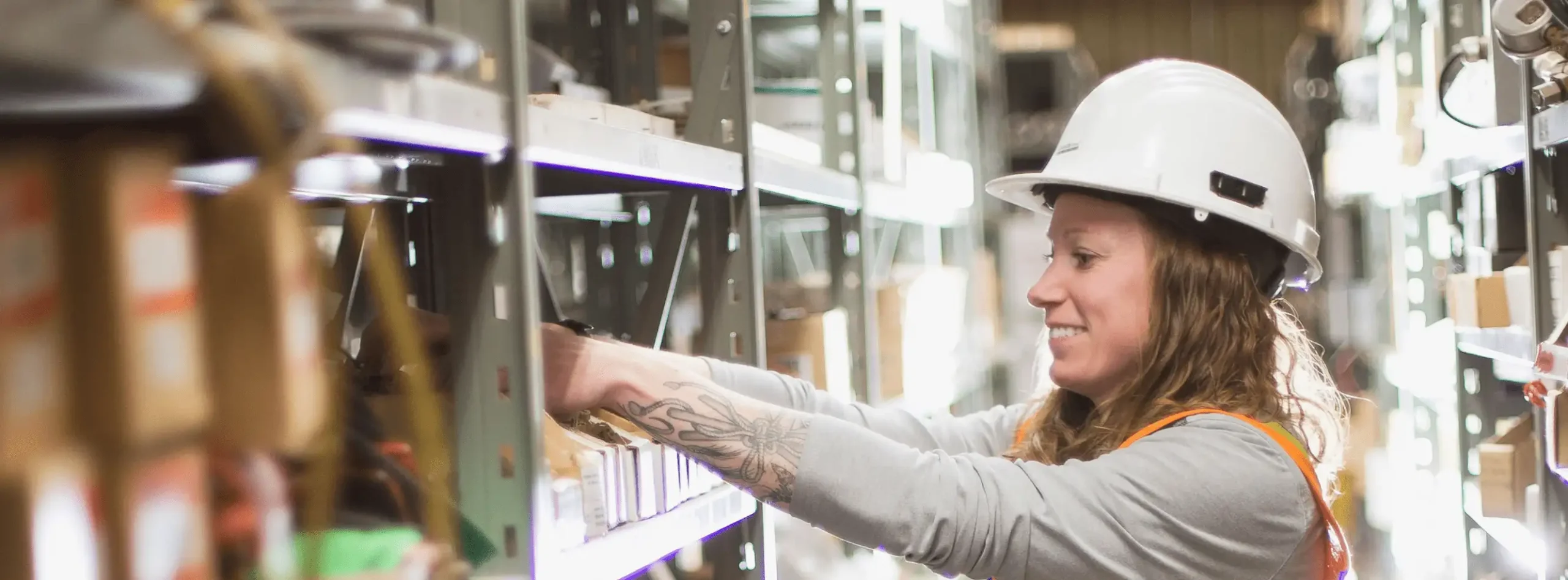In the realm of industrial cutting techniques, plasma cutting has made remarkable advancements in recent years. These advancements have propelled plasma cutting into a new era of technological innovation, revolutionizing its capabilities and efficiency.
This article explores the fascinating world of plasma cutting advancements, shedding light on the significant leaps this field has taken. Join us as we delve into the key breakthroughs and cutting-edge innovations that have transformed the industry.
Seamlessly integrating the primary keyword Plasma Cutting Advancements, we provide an insightful and informative discussion on the state-of-the-art technology shaping the future of plasma cutting.
Key Takeaways
- Plasma cutting technology has evolved since the 1950s, leading to higher precision, efficiency, and versatility.
- High-definition plasma cutting and CNC automation have revolutionized the cutting process, allowing for precise control and the ability to cut complex shapes.
- Inverter power supplies offer smaller, lighter, and more energy-efficient solutions for plasma cutting.
- Advanced plasma cutting systems deliver precise and efficient cuts, operate at higher cutting speeds, and are valuable tools for industries that require precise and efficient cutting operations.
The Evolution of Plasma Cutting
Plasma cutting has undergone a remarkable evolution, with advancements in technology propelling the industry forward. This cutting process, first developed in the 1950s, has seen significant improvements over the years, leading to higher precision, efficiency, and versatility.
Initially used primarily in industrial applications, plasma cutting has now become more accessible and widely used across various sectors.
One major advancement in plasma cutting technology is the introduction of computer numerical control (CNC) systems. These systems enable automated cutting operations, allowing for greater accuracy and repeatability. CNC plasma cutting machines can follow complex cutting patterns with ease, making them indispensable in industries such as automotive, aerospace, and metal fabrication.
Furthermore, advancements in power sources and gas delivery systems have significantly enhanced the performance of plasma cutting machines. High-frequency starting systems have replaced older pilot arc systems, resulting in faster and more reliable arc initiation. Improved gas delivery systems, such as the use of multiple gas channels, have also contributed to cleaner and more efficient cuts.
Key Technological Breakthroughs in Plasma Cutting
Plasma cutting has undergone significant advancements in recent years, thanks to key technological breakthroughs. These advancements have not only improved the efficiency and precision of plasma cutting but have also opened up new possibilities for various industries.
Here are three key technological breakthroughs that have propelled plasma cutting into the future:
- High-definition plasma cutting: This breakthrough has revolutionized the industry by delivering higher-quality cuts with increased accuracy and speed. High-definition plasma cutting systems utilize advanced torch designs and optimized gas mixtures to produce cleaner cuts with minimal dross and improved edge quality.
- CNC automation: Computer Numerical Control (CNC) technology has transformed plasma cutting into a highly automated process. CNC automation allows for precise control of the cutting process, reducing operator error and ensuring consistent, repeatable results. It also enables complex shapes and intricate designs to be cut with ease.
- Inverter power supplies: Traditional plasma cutting systems relied on bulky transformers, making them less portable and efficient. Inverter power supplies have changed the game by offering smaller, lighter, and more energy-efficient solutions. These power supplies provide better arc stability, faster cutting speeds, and increased productivity.
With these technological breakthroughs, plasma cutting has become an indispensable tool for various industries, including metal fabrication, automotive, aerospace, and construction. As technology continues to evolve, we can expect further advancements that will push the boundaries of what plasma cutting can achieve.
Advantages of Advanced Plasma Cutting Systems
One of the primary benefits of advanced plasma cutting systems is their ability to deliver precise and efficient cuts. These systems utilize advanced technology and features that allow for greater control and accuracy during the cutting process.

With the use of computer numerical control (CNC) systems, operators can program the desired cut path and specifications, resulting in consistent and precise cuts every time. Additionally, advanced plasma cutting systems often include features such as automatic height control, which helps maintain the optimal cutting distance between the torch and the workpiece, further enhancing the precision of the cuts.
Furthermore, these systems are designed to operate at higher cutting speeds, increasing productivity and efficiency in various applications. Overall, the advantages of advanced plasma cutting systems make them a valuable tool for industries that require precise and efficient cutting operations.
Cutting-edge Innovations in Plasma Cutting Technology
As we delve into the realm of cutting-edge plasma cutting technology, it becomes evident that advancements in this field have revolutionized precision and efficiency in the cutting process. Manufacturers and engineers are constantly striving to develop innovative solutions that enhance the capabilities of plasma cutting systems.
Here are three cutting-edge innovations that are shaping the future of plasma cutting:
- High-definition plasma cutting: This technology utilizes advanced power sources and improved torch designs to achieve higher levels of precision and cut quality. It allows for sharper, more intricate cuts, making it ideal for industries that require intricate shapes and tight tolerances.
- Intelligent automation: Plasma cutting systems are now equipped with intelligent automation features, such as CNC controls and advanced software. These technologies enable operators to program complex cutting paths, optimize material usage, and automate repetitive tasks, leading to increased productivity and reduced human error.
- Integrated sensing and monitoring: Plasma cutting machines now incorporate advanced sensing and monitoring systems that constantly analyze and adjust the cutting parameters in real-time. This ensures consistent quality and reduces the need for manual adjustments, saving time and improving overall cutting efficiency.
These cutting-edge innovations in plasma cutting technology are empowering industries to achieve higher levels of precision, efficiency, and productivity. By harnessing the power of these advancements, manufacturers can stay at the forefront of their respective industries and continue to push the boundaries of what is possible with plasma cutting.
Future Trends and Possibilities in Plasma Cutting Advancements
Future developments in plasma cutting technology hold immense potential for advancing precision and efficiency in the cutting process. As industries continue to seek ways to improve productivity and reduce costs, plasma cutting advancements are expected to play a crucial role in meeting these demands.
One of the key future trends in plasma cutting is the integration of artificial intelligence (AI) and machine learning algorithms. This would enable automated adjustments and optimizations of cutting parameters in real-time, resulting in improved accuracy and reduced material waste.
Additionally, advancements in plasma power sources and consumables are expected to enhance the quality and speed of the cutting process. The use of advanced materials and coatings on cutting nozzles and electrodes would extend their lifespan, further improving operational efficiency and reducing maintenance costs.
With ongoing research and development, the future of plasma cutting holds exciting possibilities for increased precision and productivity in various industries.
Frequently Asked Questions
How Has Plasma Cutting Evolved Over Time?
Over time, plasma cutting has evolved through technological advancements. It has become more efficient, precise, and versatile, allowing for faster and cleaner cuts in various materials. These advancements have revolutionized the industry and expanded its capabilities.
What Are Some Key Technological Breakthroughs in Plasma Cutting?
Some key technological breakthroughs in plasma cutting include advancements in power sources, cutting speeds, and precision. These improvements have allowed for more efficient and accurate cutting processes, leading to increased productivity and cost savings in various industries.
What Are the Advantages of Advanced Plasma Cutting Systems?
Advanced plasma cutting systems offer numerous advantages, including increased cutting speed, improved precision, and the ability to cut a variety of materials. These advancements have revolutionized the industry, making plasma cutting an essential tool for many applications.
What Are Some Cutting-Edge Innovations in Plasma Cutting Technology?
Some cutting-edge innovations in plasma cutting technology include the development of high-definition systems that offer superior precision and accuracy, advanced control systems for enhanced automation, and the integration of robotic technology for increased efficiency and productivity.
What Are the Future Trends and Possibilities in Plasma Cutting Advancements?
Future trends and possibilities in plasma cutting advancements include improved precision, faster cutting speeds, and increased automation. Innovations such as advanced software algorithms and artificial intelligence integration are expected to further enhance the capabilities of plasma cutting technology.
Conclusion
In conclusion, plasma cutting has undergone significant advancements in recent years, propelling it into a new era of technological innovation. Through key breakthroughs and cutting-edge innovations, plasma cutting systems have become more efficient and capable, offering numerous advantages in the industrial cutting industry.
As technology continues to evolve, the future of plasma cutting holds exciting possibilities and trends that will further enhance its capabilities and shape the field. The advancements in plasma cutting technology have revolutionized the industry and are poised to continue driving progress in the future.
You May Also Like:






